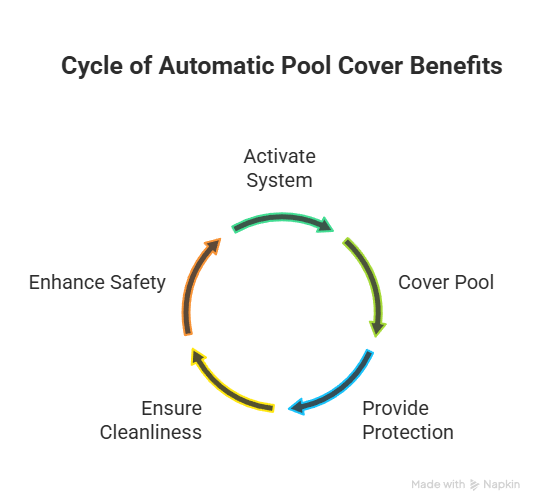Is a Gutter Business Profitable in West Palm Beach, Florida?Is a Gutter Business Profitable in West Palm Beach, Florida?
Starting a gutter installation business might not sound as flashy as launching a tech startup, but in West Palm Beach, Florida, it can be surprisingly lucrative. With its tropical climate, frequent rain, and demand for stormwater management, the gutter industry is quietly booming. But is a gutter business really profitable? With Gutters of West Palm Beach, let’s explore the costs, revenue potential, market dynamics, and local nuances to help you decide.

🌴 Why West Palm Beach Is Prime Real Estate for a Gutter Business
West Palm Beach, located in South Florida’s Palm Beach County, offers an ideal environment for exterior home services. Known for its subtropical weather, the region experiences over 60 inches of rainfall annually—well above the national average. That much rain makes rain gutter systems a necessity, not a luxury.
Key factors driving demand in West Palm Beach:
- High precipitation and humidity
- Aging infrastructure and homes needing gutter replacement
- Local building codes requiring proper drainage systems
- Year-round exterior maintenance needs due to foliage and storms
- The hurricane season, which increases demand for storm-resistant solutions like seamless gutters and leaf guards
In short, if you’re starting a business in Palm Beach County, you’re tapping into a constant local need—a hallmark of a sustainable, profitable enterprise.
💸 The Profit Potential: Revenue vs. Operating Costs
Startup and Overhead Costs
Starting a gutter installation business in West Palm Beach is relatively low-cost compared to other construction or home service businesses.
Typical startup costs include:
- Work truck or trailer: $10,000–$25,000
- Gutter machine (for seamless gutters): $5,000–$15,000
- Tools and safety equipment: $2,000–$4,000
- Licensing, insurance, and business setup: $1,500–$3,000
- Marketing (website, SEO, local ads): $1,000–$5,000
Total estimated startup: $20,000–$50,000
Recurring operational expenses include:
- Labor (if hiring a team)
- Fuel and vehicle maintenance
- Materials (aluminum, copper, downspouts, hangers)
- Business insurance (e.g., liability and workers’ comp)
- Marketing and lead generation (especially local SEO and Google Ads)
Revenue and Margins
Gutter installation jobs in West Palm Beach typically range from $800 to $3,000 per project, depending on property size, material, and complexity.
Average gross margins for gutter businesses hover between 30% and 50%, especially when upselling high-end systems like copper gutters, gutter guards, and custom downspouts.
If a solo operator completes 3–5 jobs per week at an average of $1,500 per job, that’s $18,000–$30,000 monthly gross revenue. Even after expenses, net profits can hit $8,000–$12,000/month.
🧩 Local SEO and Marketing: The Profit Multiplier
In West Palm Beach, competition is healthy but not oversaturated. Strategic local SEO can place your business above national franchises in Google’s Local Pack.
To stand out, optimize for:
- “Gutter installation West Palm Beach”
- “Seamless gutters Palm Beach County”
- “Rain gutter repair near me”
- “Affordable gutter guards in South Florida”
Use salient entities and LSI keywords naturally, including:
- Soffit and fascia repair
- Roof drainage systems
- Aluminum vs copper gutters
- Hurricane-rated downspouts
- Leaf filter systems
Google Business Profile (GBP) is critical. Consistently update your listing with:
- Photos of local jobs
- Service descriptions using location-based terms
- Customer reviews with keywords like “gutter repair West Palm Beach”
Also, partner with local roofing contractors, real estate agents, and HOA managers to secure recurring referral business.
⚖️ Comparing Gutter Business Profitability to Other Trades
Let’s look at how a gutter business stacks up against other local home service businesses in West Palm Beach.
| Industry | Avg Job Revenue | Startup Cost | Scalability | Seasonality |
|---|---|---|---|---|
| Gutter Installation | $800–$3,000 | Medium | High | Low–Medium |
| Pressure Washing | $150–$500 | Low | Medium | High |
| HVAC Services | $3,000–$7,000 | High | Medium | Low |
| Landscaping | $100–$500 | Medium | Low–Medium | High |
| Roofing | $5,000–$20,000 | High | Medium | Medium |
Clearly, gutter services offer solid job value with lower barriers to entry and fairly consistent demand, making them an attractive middle ground between niche and necessity. For professional needs, go to Gutters of West Palm Beach.
🌐 Legal & Regulatory Considerations in Palm Beach County
Before launching, ensure compliance with:
- Florida DBPR (Department of Business and Professional Regulation) licensing
- Palm Beach County permits for work involving structural modifications
- Liability insurance and workers’ compensation, especially if you’re hiring
- OSHA standards for ladder and roof work
Homeowners in West Palm Beach are savvy and expect legitimate credentials, so being licensed and insured gives you an edge in trust—and profitability.
🌟 How to Maximize Profitability: Expert Tips
- Niche Down Early
Specialize in high-margin services like copper gutters, commercial installs, or hurricane-rated gutter guards. - Upsell Maintenance Packages
Offer annual gutter cleaning and inspection contracts to turn one-time installs into recurring revenue. - Use Tech Tools
Software like Jobber or Housecall Pro streamlines scheduling, invoicing, and CRM—boosting efficiency. - Embrace Local Branding
Highlight your local expertise—mention neighborhoods like El Cid, Flamingo Park, and Northwood in your marketing. - Capitalize on Storm Season
Prepare special promotions before and after hurricane season when homeowners are focused on damage prevention and repairs.
🧠 Final Verdict: Is a Gutter Business Profitable in West Palm Beach?
✅ Yes. Very. With manageable startup costs, high service demand, and strong average margins, a gutter installation business in West Palm Beach offers real financial upside. The region’s climate and seasonal weather patterns create steady leads, while smart SEO and upselling turn those leads into repeat customers.
Whether you’re a solo tradesperson or planning to build a full crew, this niche in Palm Beach County is both scalable and sustainable. When paired with strategic local marketing and high-quality service, gutters can rain money.
📍 Quick Takeaways for Success in West Palm Beach
- High Rainfall + Aging Homes = Constant Demand
- Average Job Margin: 30–50%
- Startup Cost: $20K–$50K
- Biggest Profit Boosters: SEO, Referrals, Recurring Contracts
- Biggest Risk: Poor Branding or Ignoring Licensing





